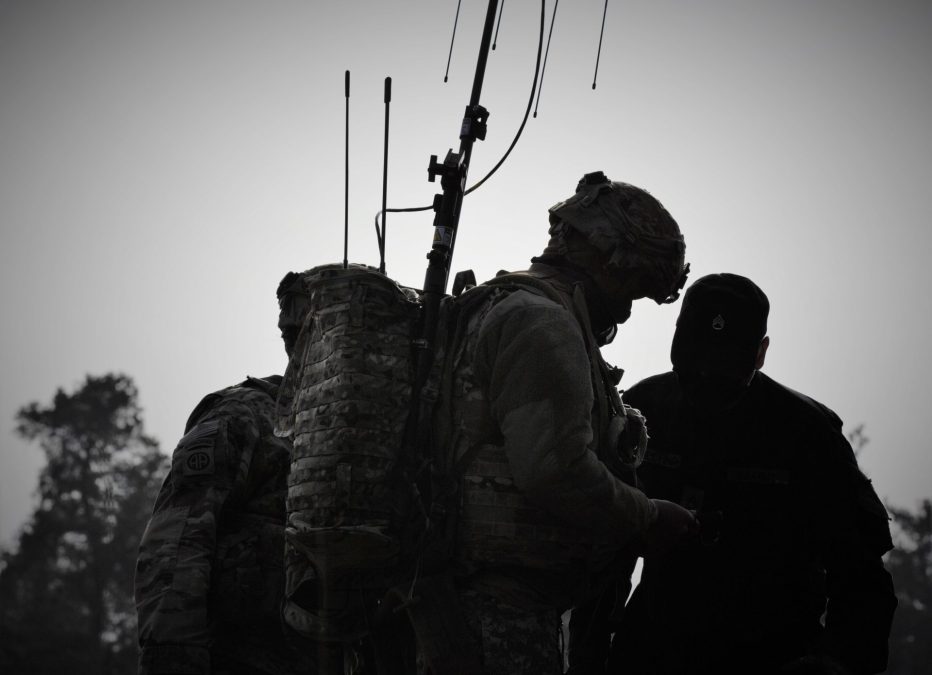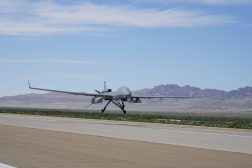Commonality, adaptability will be key for Army to stay ahead of electronic warfare threats

SAVANNAH, Ga. — The Army is looking at baking in adaptability to its systems from the beginning — while also working hand in hand with multiple offices across the service — to ensure capabilities remain relevant in the highly dynamic electromagnetic spectrum.
Electromagnetic spectrum operations have gained significant prominence in recent years, after decades of neglect from the U.S. military and conflicts that did not place a premium on agility within this invisible space.
In such a dynamic realm in which concepts and technologies can rapidly change — as evidenced in the conflict between Russia and Ukraine — how can the Army ensure that it stays relevant and not have to keep developing new tools?
The answer is modularity, a baseline level of commonality and tailoring for region and echelon.
Officials explained that there ‘s no one-size-fits-all solution, and systems must adhere to an open systems architecture.
“If we don’t do that openness from the sensor standpoint and the software standpoint, then that’s where we’ll lose that battle,” Brig. Gen. Wayne “Ed” Barker, program executive officer for intelligence, electronic warfare and sensors, told DefenseScoop in an interview at the Army’s Technical Exchange Meeting Dec. 12 in Savannah, Georgia.
The Army has been pursuing open systems requirements under something it calls Command, Control, Communications, Computers, Cyber, Intelligence, Surveillance, Reconnaissance (C5ISR)/Electronic Warfare Modular Open Suite of Standards (CMOSS). CMOSS allows for capabilities to be inserted, updated and swapped on hardware platforms — harnessing the modern abilities of software.
Tailoring for theater and echelon
The Army currently does not have a program-of-record jammer fielded. However, the service has been developing such a capability for several years and it’s expected to be fielded soon.
Additionally, the department has started thinking about other needs in the spectrum for forces to be successful against adept adversaries such as spectrum analyzers, spectrum management tools and deception capabilities to disguise forces within the spectrum.
Given the uniqueness of units and theaters, the Army can’t provide everyone the same gear like it did in previous years. For example, the Pacific region is rife with thick jungle foliage and vast distances, while Europe is more mountainous — all of which pose unique spectrum challenges. Light infantry, airborne and vehicle-based formations such as Stryker or armored units, also have different needs.
According to Barker, some level of commonality will provide a baseline to build capability, but then the PEO must be flexible enough to tailor on top of that “foundational capabilities. And then there may be specific new theater needs to get at ranges — PACOM versus EUCOM as an example,” he said, referring to U.S. forces in the Pacific and Europe.
The Terrestrial Layer System-Echelons Above Brigade (TLS-EAB) system — a signals intelligence, cyber and electronic warfare capability designed primarily for divisions, corps and Multi-Domain Task Forces to sense across greater distances — is a case in point.
The Army came to the determination that this solution would likely have to be tailored based on theater and thus, not provide a single solution to users.
“A lot of the conversation has been what are the commonality, what’s the commonality that could be generic enough, applicable to all — and then starting to look at the specific requirements that may be applicable to specific” areas of responsibility, Barker said of the EAB capability, which is still in early development with the Army and vendor Lockheed Martin.
It also gets to the notion that TLS is a family of systems, with a manpack version for soldiers to carry jammers while dismounted and the smaller Brigade Combat Team version that will be mounted on Strykers and eventually Army Multi-Purpose Vehicles — each for a specific unit or region.
All this tailorability and adaptability needed to stay ahead of adversaries in this dynamic environment requires the Army to work across communities to ensure systems and concepts work together.
“As we iterate with the materiel, everything that we learned on the materiel side needs to be fed back to the” Army capability managers, Baker said, referencing the personnel that generate requirements. “We have to move together [across the Army].”
Moreover, the capability managers and various PEOs have to be in lockstep, especially from a platform perspective. If a platform is designed without enough power or space for electronic warfare systems from the beginning, it will involve much more work later in the prototyping phase that will cost significantly more money in retrofitting and redesigning after the fact.
Much of these changes are making their way into contracting language, codifying their importance.






